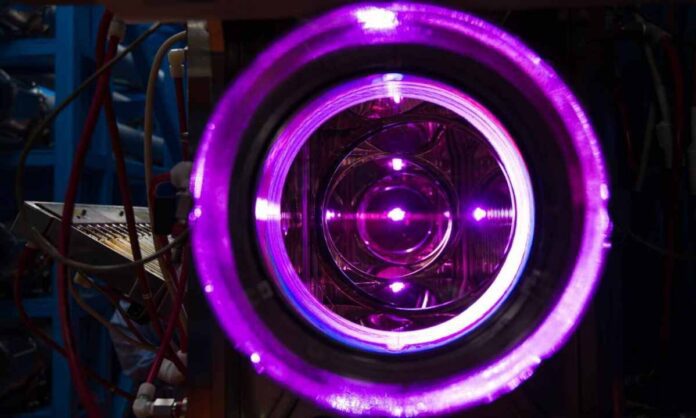Fusion, which mimics the sun’s power-generating process, has always been regarded as an ideal energy source due to its potential for being safe, clean, affordable, and reliable.
Scientists have been exploring the possibility of using high-powered lasers to compress thermonuclear material since the early 1960s. The goal is to achieve ignition, where the output of inertial fusion energy exceeds the energy delivered to the target. In December 2022, ignition was achieved at the National Ignition Facility, but numerous challenges remain before fusion energy can become technically and commercially viable for mass production.
Researchers at the University of Rochester’s Laboratory for Laser Energetics (LLE) have made an important breakthrough in achieving the goal of creating a fusion power plant. They have experimentally demonstrated a technique called dynamic shell formation for the first time. The findings are discussed in a paper published in Physical Review Letters, authored by Igor Igumenshchev and Valeri Goncharov from LLE.
Igumenshchev states, “This experiment has shown the feasibility of an innovative target concept suitable for affordable, mass production for inertial fusion energy.”
Traditionally, inertial fusion energy involves freezing a small amount of hydrogen fuel (deuterium and tritium isotopes) into a solid spherical shell. This shell is then bombarded by lasers, heating the central fuel to extremely high pressures and temperatures. Once these conditions are reached, the shell collapses and undergoes fusion, releasing a tremendous amount of energy that could power a carbon-free plant. However, fabricating the required number of targets for a fusion power plant is expensive and challenging using the current frozen preparation process.
Dynamic shell formation offers a more feasible and cost-effective alternative. It involves injecting a liquid droplet of deuterium and tritium into a foam capsule, which transforms into a spherical shell upon laser irradiation. The shell then implodes and collapses, leading to ignition. Unlike traditional methods, dynamic shell formation does not rely on expensive cryogenic layering since it utilizes liquid targets, making target production easier.
Although dynamic shell formation was proposed by Goncharov in a 2020 paper, it had not been experimentally demonstrated until now. In a proof-of-principle experiment using the OMEGA laser at LLE, Igumenshchev, Goncharov, and their colleagues shaped a plastic foam sphere with the same density as deuterium-tritium liquid fuel into a shell, marking a critical step in validating the dynamic shell concept.
Further research will require lasers with longer and more energetic pulses to actually achieve fusion using the dynamic shell formation technique. Nonetheless, this initial experiment suggests that dynamic shell formation could be a feasible approach towards practical fusion energy reactors.
Igumenshchev said: “By combining this target concept with a highly efficient laser system currently being developed at LLE, we can create a very promising path towards fusion energy.”
Reference:
I. V. Igumenshchev et al, Proof-of-Principle Experiment on the Dynamic Shell Formation for Inertial Confinement Fusion, Physical Review Letters (2023). DOI: 10.1103/PhysRevLett.131.015102
